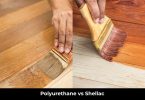Muzzle devices like flash hiders, compensators, and muzzle brakes are important because they help reduce recoil, control muzzle rise, and suppress flashes and sound. They also look great on your firearm.
If you are wondering how to pin and weld a muzzle device, first you have to make sure that you are complying with all the federal, state, and local laws for modifying firearms.
Here’s how to pin and weld a muzzle device.
How to Pin and Weld a Muzzle Device
1. Gather your tools
- Muzzle device
- Welding tools (welder and welding gas)
- Steel pin
- Drill bits
- Rotary Tool
- Barrel and thread protector
- Drill Press
- Steel punch
- Marking tool (pencil)
- Safety tools (goggles, gloves, mask, etc.)
- Ball peen hammer
- Grinding tool
2. Find the muzzle
First pick the best muzzle device for your gun. It is better that you pick one that is more than 16 inches in barrel length for this purpose.
Pin welding is a popular method for installing muzzle devices, which is why many manufacturers design their brakes especially for pin welding. You could also pin and weld a flash hider or flash suppressor.
3. Drilling a hole in the device
If the muzzle device you chose does not have holes to hold the pin, you will have to drill a hole in the device.
But this method has its own risks. If you don’t have steady hands or the right tools for the task, we strongly recommend that you hire a professional to do the drilling. If the hole gets too big or too small, or if you damage the device there will be a huge problem.
Make sure to keep your hands steady and keep the size of the hole you drill accurate. If the hole doesn’t match the pin perfectly, it won’t go through. It doesn’t need to be exactly accurate as you will weld it into place and some gap in the hole can be covered.
4. Measuring the pin size
Now you need to measure the size of the pin and shape it into the right size. You can use the steel punch tool to measure the depth of the hole and then create markings on your pin. The pin can be cut and shaped using the rotary tool.
5. Installing the pin
Check if the pin is placed on the barrel threads. This will help stop the muzzle brake device from spinning.
When you have the right sized hole, position the pin inside and tap it using a ball pin hammer. This will help secure the device into place
5. Welding
Remember to take all the necessary precautions before you start this process. Too much welding can make your firearm heavier.
If you have no experience with welding, make sure you ask a professional for help. If you are confident, use the welding machine to weld a joint around the pin with the gun.
If you overdo it a little there is no need to worry because you can get rid of the excess using a grinding tool. This is not a mandatory step but it is one of the best practices when welding a muzzle device.

I hope we could explain how to pin a muzzle device and weld it on your barrel. It is a simple job if you have the right tools and information. We recommend taking help from professional welders if you have never used a welding machine before.
If you want to go DIY, chances are you may damage a few muzzle devices in your first attempts, but practice makes perfect and you will get better over time. Now you know how to pin and weld a muzzle device!
FAQs
Q. How to pin and weld a barrel?
Ans. This process is done by drilling a hole in the muzzle device if it doesn’t have one. Then you insert a pin in the hole to keep the device in place. Finally weld the pin to secure it. This is how you can pin and weld a barrel.
Q. How to pin and weld a flash hider?
Ans. The process of pinning and welding is a common gunsmith technique. A flash hider is pinned and welded in the same way as a muzzle device. First you must drill a hole into the barrel threads, insert a steel pin and weld it to keep it in a stable and secured position
Q. What is a weld pin?
Ans. A weld pin is a device used to secure things. It is designed with a thin shaft that allows the pin to be welded into the metal surface.
Q. How important is a muzzle brake?
Ans. Muzzle brakes help reduce recoil by 50%. It is mostly used on large guns and helps avoid recoil injury.







